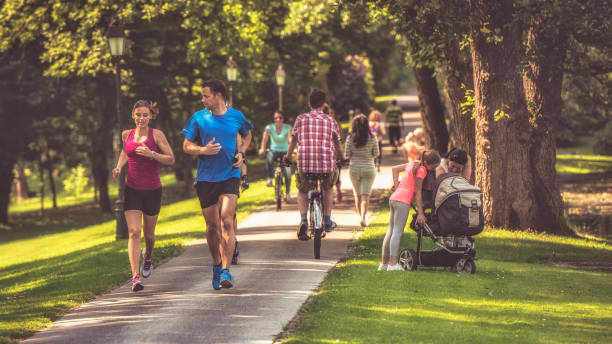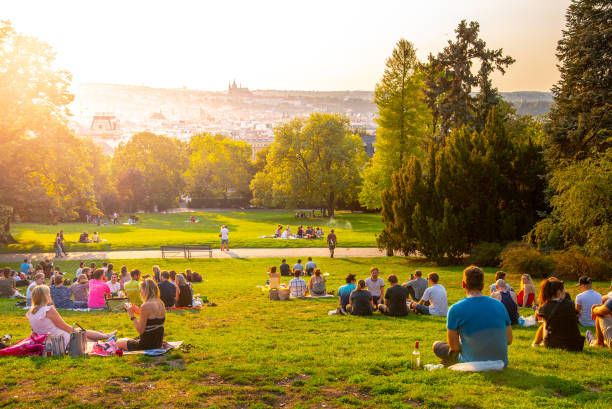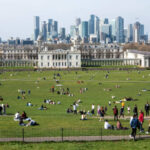Public parks are essential components of urban and suburban environments, serving as vibrant communal spaces where people can engage with nature, exercise, and interact with their communities. These green spaces, ranging from small neighborhood parks to large, sprawling urban oases, provide significant benefits to both individuals and society as a whole. Whether offering a quiet place to reflect or serving as the backdrop for family outings, sports, and cultural events, public parks enhance the quality of life in myriad ways.
In this guide, we will explore the role of public parks in promoting physical and mental well-being, fostering community, preserving biodiversity, and serving as important cultural and historical landmarks.
1- Public Parks as Spaces for Physical Health and Recreation


One of the most visible and significant roles of public parks is the promotion of physical activity. Parks provide ample opportunities for exercise and outdoor recreation, which are essential to maintaining a healthy lifestyle. People of all ages use parks for activities such as jogging, walking, cycling, yoga, and playing sports. With well-maintained trails, playgrounds, and open fields, parks encourage movement and exercise in a natural setting, making it accessible and enjoyable.
For children, public parks play a critical role in promoting physical activity and development. Playgrounds offer a safe space for children to climb, run, and explore, which is essential for developing motor skills and building strength. Organized sports like soccer, basketball, and tennis also bring people to parks, offering a structured way to stay fit and socialize with others.
In addition to exercise, parks contribute to overall well-being by providing spaces for relaxation and stress relief. People can take a break from their hectic lives by walking among trees, sitting by a pond, or simply enjoying a picnic in the grass. Research has consistently shown that spending time in nature helps reduce stress, lower blood pressure, and improve mood. Public parks, therefore, act as vital “green lungs” within urban environments, promoting both physical and mental health.
2- Mental Well-being and Connection with Nature
In an increasingly urbanized world, many people have limited access to nature in their daily lives. Public parks bridge this gap by providing accessible green spaces where people can connect with the natural world. Spending time in nature has been shown to improve mental well-being by reducing anxiety, depression, and feelings of isolation. Parks offer a refuge where individuals can unplug from the stresses of modern life, immerse themselves in greenery, and enjoy the soothing sounds of birds and rustling leaves.
The concept of “biophilia,” or the human affinity for nature, explains why people are drawn to parks and natural settings. This innate connection to nature has profound psychological benefits, particularly in urban areas where natural landscapes may be scarce. Public parks serve as sanctuaries for reflection, mindfulness, and relaxation, helping individuals reset their mental and emotional states.
Moreover, parks provide opportunities for creativity and contemplation. Many writers, artists, and thinkers find inspiration in the peaceful, natural surroundings of a park. Sitting under a tree, observing wildlife, or walking along a flower-lined path can stimulate the imagination and provide a fresh perspective.
3- Public Parks as Community Hubs
Public parks are not only places for personal enjoyment but also spaces that foster a sense of community. They are gathering places where people of all ages, backgrounds, and interests can come together, interact, and build connections. Whether it’s a family picnic, a group yoga class, or a community festival, parks offer venues for shared experiences that strengthen social bonds.
Many public parks host events that bring together neighbors and communities, such as outdoor concerts, farmers’ markets, art exhibitions, and cultural festivals. These events help foster a sense of belonging and cultural exchange, creating opportunities for people to learn about each other’s traditions and experiences. Parks are also often the site of volunteer activities, such as tree planting, clean-up days, and community gardening, which encourage civic engagement and collective responsibility for maintaining public spaces.
For families, parks offer an affordable and accessible way to spend quality time together. Children can play on playgrounds while parents and caregivers relax on benches or engage in conversation with others. The shared use of these spaces promotes intergenerational interactions, from grandparents watching grandchildren play to young people assisting with community events.
- Preserving Biodiversity and the Environment
Public parks serve as important urban green spaces that support local biodiversity. In cities, parks provide habitats for various species of birds, insects, and small animals, creating pockets of nature amidst the built environment. These spaces also preserve native plant species and contribute to environmental sustainability by acting as carbon sinks, absorbing pollutants, and reducing urban heat islands.
Many parks incorporate sustainable landscaping practices, such as planting drought-resistant native species, reducing pesticide use, and creating wildlife corridors. These practices help to conserve water, protect local ecosystems, and support pollinators such as bees and butterflies. In urban areas, public parks play a crucial role in promoting environmental awareness and educating the public about the importance of biodiversity and conservation.
For individuals, parks offer a chance to observe and learn about nature up close. Birdwatchers, for instance, can spot different species in city parks, while gardeners can appreciate the beauty of local flora. Many public parks also have educational programs and signage that provide information about local wildlife, plant species, and the history of the park itself. This hands-on exposure to nature can foster a greater appreciation for the environment and inspire individuals to take action to preserve natural habitats.
- Cultural and Historical Significance
In addition to their natural and recreational functions, many public parks hold cultural and historical significance. Parks are often home to monuments, statues, memorials, and historic buildings that commemorate important events or individuals. These landmarks provide visitors with a sense of history and connection to the past, making parks not only places of leisure but also of education and reflection.
For example, Central Park in New York City is not only an iconic green space but also a site rich in history and art. It contains sculptures of famous figures, historical bridges, and landmarks such as Bethesda Terrace and the Bow Bridge. Similarly, public parks in Europe, such as Hyde Park in London or the Tuileries Garden in Paris, are steeped in history, often reflecting the social, political, and artistic movements of their time.
In many cities, public parks are also the locations for art installations, performances, and cultural events that celebrate local traditions and creativity. These events transform parks into dynamic, living spaces where culture and nature coexist.
- Challenges Facing Public Parks
Despite their many benefits, public parks face numerous challenges, particularly in urban areas where space is limited, and budgets are tight. One of the biggest challenges is the maintenance and upkeep of these spaces. Parks require regular care to ensure that they remain safe, clean, and accessible to all. This includes everything from maintaining playground equipment and pathways to managing litter and preserving plant life.
Funding for public parks is often insufficient, leading to under-maintained facilities and reduced programming. This can lead to a decline in the park’s overall condition and attractiveness, which may discourage visitors. Advocating for better funding and community involvement is essential to ensure that parks continue to thrive and serve their vital functions.
Another challenge is ensuring that public parks are inclusive and accessible to all members of the community. This includes providing wheelchair-accessible paths, benches, and playground equipment, as well as creating spaces that are welcoming to people of all backgrounds and abilities. Public parks should be spaces that promote equity, offering everyone the opportunity to enjoy nature and engage in recreational activities.
Conclusion
Public parks are indispensable parts of any community, offering countless benefits that enhance physical health, mental well-being, and social connection. As spaces that preserve biodiversity, celebrate cultural heritage and provide essential green space in urban areas, public parks are critical to the fabric of a healthy and vibrant society. They are places where people of all ages can come together, enjoy nature, and find respite from the pressures of everyday life.
In an era of rapid urbanization and environmental challenges, protecting and investing in public parks is more important than ever. By ensuring that parks remain accessible, well-maintained, and inclusive, we can continue to enjoy their many benefits and preserve these green havens for future generations.







